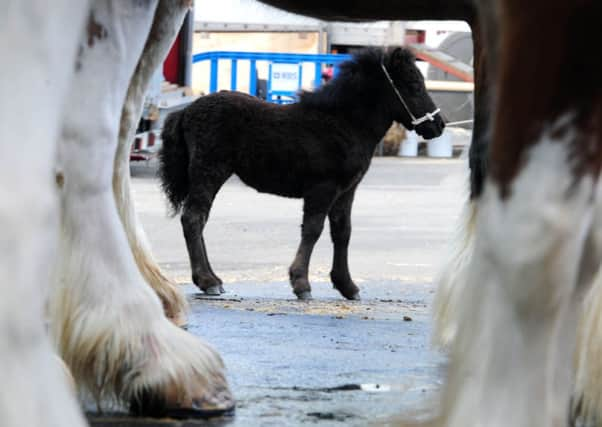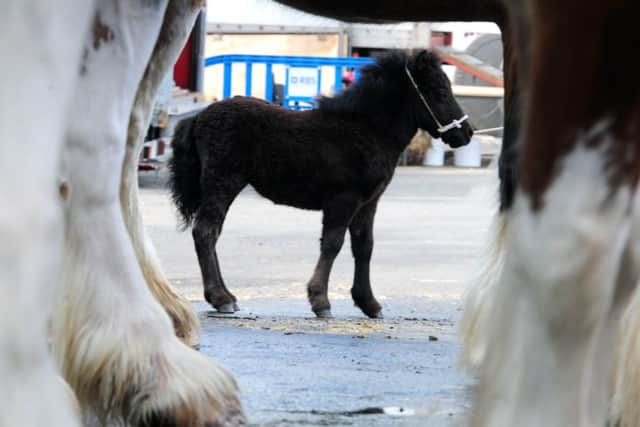Shetland ponies ‘dumped by irresponsible owners’


The craze for miniature horses was boosted by a television advert that featured Shetland ponies dancing, moon-walking and tapping their hooves to the Fleetwood Mac track Everywhere.
Although the breed has always been popular, the advert for the “3” phone company turned the prancing ponies into YouTube stars.
Advertisement
Hide AdAdvertisement
Hide AdAnother advert, for Visit Scotland, featuring the same ponies wearing Fair Isle jumpers, was shown in cinemas and online.


Yesterday, Helen Thompson, one of the country’s leading Shetland breeders, said the dancing ponies advert, described as the funniest ever, brought the animals worldwide attention but she claimed that the growing numbers being abandoned at animal centres was down to irresponsible breeders flooding the market with foals to make money.
“There have always been too many ponies being bred, of all breeds. Without a doubt, there are too many ponies about, but not just Shetland ponies – ponies throughout the Highlands, Scotland and the UK,” said Ms Thompson, chairwoman of Pony Breeders of Shetland.
“There are problems about the numbers. I enjoyed the advert, but the breed will always have too many numbers, because of irresponsible owners wanting to make money.
“People think of the ponies as pets, but they are working horses. We race them, which is good for the breed.”
Scottish SPCA chief superintendent Mike Flynn said there had been a notable rise in the numbers of people contacting rescue and rehoming centres wanting to hand over their horses.
“Year on year we have seen a notable rise in the number of people contacting our rescue and rehoming centres to discuss giving up their horse,” he said.
“In the majority of cases, the reason given by the owner is that they can no longer meet the huge costs involved in horse ownership and this is always particularly evident in the lead-up to winter, with people worried they will not be able to provide supplementary feeding for their horses over the colder months..
Advertisement
Hide AdAdvertisement
Hide Ad“We took in 40 equines in 2013 and have already rescued 26 this year, some of which had been neglected by their owners due to financial issues. In several cases horses required urgent veterinary attention but had been left to suffer because their owner could not afford the vet bills.”
Mr Flynn added: “While most people know we rehome dogs, cats and small animals, there is less awareness of the fact that we rescue, rehabilitate and find new owners for horses and ponies at both our Edinburgh and Lothians and Aberdeenshire centres.
“It is extremely rewarding to offer an animal a second chance in life and we would certainly encourage anyone thinking of taking on an equine to contact us.
“However, we would always encourage anyone thinking of taking on a horse or pony to bear in mind the considerable costs involved. In the current economic climate, feed, tack, farriers’ fees, livery costs and vets’ bills mean this is a luxury that few people can afford.”
Vicki Alford, horse rehoming manager at the Blue Cross in Burford, Oxfordshire, said her organisation took in eight ponies in 2003, but 63 last year.
She said: “This is the equine equivalent to the handbag dog trend.
“Small ponies are very popular with families who want to get their children a pet.
“But despite their size, Shetlands can be very strong and require as much care and management as any other larger horse.”